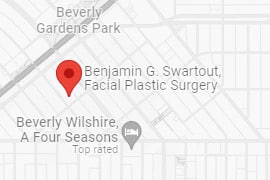
Are you considering otoplasty, but concerned about the recovery process? This guide can help you through post-otoplasty recovery, this process can be a challenging task. This article aims to demystify the recovery timeframes for otoplasty, the physical limitations after plastic surgery, post-operative care requirements, ways to aid healing, potential complications, and the importance of follow-up appointments. Dive deep into what to expect during this journey to ensure a smooth and comfortable recovery.
Overview: Otoplasty Recovery Timeline
Immediate Post-Surgery (First 24 Hours):
- Right After Surgery: Patients typically wake up with their ears covered in bandages to provide support and protection.
- Pain Management: Mild to moderate pain is common, which can be managed with prescribed medications.
First Week Post-Op:
- Bandage Care: The head bandage should be kept on to minimize swelling and support the new ear position.
- Follow-Up Visit: Around the end of the first week, a follow-up appointment is usually scheduled to assess healing and possibly remove bandages or sutures.
First Month After Surgery:
- Swelling and Bruising: Some residual swelling and bruising are normal and will gradually subside. Ears may appear slightly more prominent during this phase.
- Gradual Resumption of Activities: Light activities can be resumed, but strenuous exercises should be avoided.
Six Weeks to Three Months:
- Major Healing Milestones: By the six-week mark, significant healing is typically observed.
- Continued Care: It’s crucial to continue following post-operative care instructions, including avoiding activities that might impact the ears.
Three Months and Beyond:
- Full Recovery: Complete healing and settling into the final shape of the ears can take a few months.
- Final Results Visible: The ears will have settled into their new position, and any scars should be well on their way to maturation.
Immediate Aftermath of Otoplasty: The First Few Days
On the day after surgery, you can expect some pain, which can be managed with prescribed pain medications. The ears can look more protruding than expected due to swelling. It’s perfectly normal and is a part of the healing process. Make sure to follow your surgeon’s instructions about dealing with your surgical dressing, to prevent any complications.
In the days after surgery, continue taking your pain medications as prescribed. You might notice that the pain and swelling decrease gradually. The surgical procedure and treatment of your ears are significant, so respect the healing process and don’t rush it. Approaching post-surgery days with patience will aid in a smooth transition and a successful recovery period.
Dealing with Swelling and Care Measures Post-Otoplasty
Swelling is a common effect post-otoplasty (ear surgery). It can persist for weeks after surgery, but this is no cause for alarm. Essential care measures like sleeping with your head elevated using pillows can significantly expedite healing.
Ensure the incision site is clean to prevent infection. Apply antibiotic ointment as prescribed by the surgeon and avoid touching the incision site unnecessarily. Use ointments mindfully, as excessive use can lead to other problems.
In general, dedication to the care instructions provided by your surgeon outlines the pace of your healing process. Remember to be patient, as true recovery is steady but slow in the weeks after surgery. Do not expect to observe dramatic differences overnight, as each day furthers healing a little bit more.
Resuming Daily and Physical Activities After Ear Surgery
After a bilateral otoplasty surgery, it’s advisable to prioritize recovery over normal activities. Light activity, such as walking, can begin around a week post-surgery, but heavy lifting and contact sports should be postponed for 4-6 weeks.
When it comes to resuming exercise, start with low-impact routines after two weeks, gradually increasing intensity while staying attentive to any discomfort or swelling. Compression bandages may also aid in a smooth recovery process. Recovery timelines can differ, so it’s crucial to follow your surgeon’s guidance and listen to your body before returning to your daily activities.
Nurturing Optimal Healing: How to Support Your Body Post-Otoplasty
To support optimal healing after otoplasty, it’s crucial to rest and adopt the correct position, specifically elevating your head to minimize swelling. You should avoid any unnecessary strain on your body, particularly activities that may put pressure on your freshly operated ears.
Pay attention to how much and what you eat. A balanced diet promoting healing can quicken recovery. Foods rich in vitamin C assist in repairing your blood vessels.
Establishing a proper sleep position, preferably on your back instead of your side, can foster healing and prevent undue stress on the operated region. Supporting these measures can expedite the healing process post-otoplasty and even prolong its results.
Factors Dictating Otoplasty Healing Time
Several factors can dictate the otoplasty healing time. Throughout the recovery period, patients are usually advised by facial plastic surgeons to wear a headband protecting the ears, which can help expedite recovery time. However, the pace of your body’s natural healing process can also impact this.
The surgeon’s capabilities, their experience, and the techniques they use during the procedure play a significant role. if the procedure is done correctly, it can notably reduce healing time. Additionally, personal habits such as smoking or chronic diseases like diabetes can slow down the healing.
Just as in other cosmetic surgeries, your body’s response to the procedure can greatly impact the recovery time. Disciplined adherence to the surgeon’s post-otoplasty care instructions can significantly accelerate the healing, where elements like nutrition and rest are key.
Always consult with your facial plastic surgeon for a personalized estimate on otoplasty healing time and plan your recovery period accordingly.

The Role of a Successful Surgeon in Otoplasty Recovery
The Role of a Successful Surgeon in Otoplasty Recovery” emphasizes the pivotal role played by a skilled facial plastic surgeon like Dr. Benjamin Swartout in the success of otoplasty procedures. Dr. Swartout’s expertise extends beyond the operating room, encompassing the entire journey of the patient from pre-operation preparation to post-surgery recovery.
A proficient surgeon ensures that the patient not only achieves their aesthetic goals but also experiences a smooth and complication-free recovery. This expertise involves preempting and effectively managing potential complications, thus enhancing the overall outcome of the surgery.
Moreover, Dr. Swartout’s approach to otoplasty involves thorough pre-surgery mental and physical preparation for the patient. This includes addressing any concerns and queries, establishing open lines of communication, and providing guidance and support throughout the recovery phase. Such comprehensive care is instrumental in ensuring a streamlined and comfortable recovery process for the patient.
Potential Complications During Otoplasty Recovery
During the recovery period, several complications may occur. The most frequent issue is an infection which may set in post-surgery, usually due to improper care of the stitches. Regular cleaning of the stitches is vital to prevent this. Occasionally the surgeon may face issues with the ear cartilage. Uneven cartilage may result in asymmetrical ears, an issue that the surgeon can only correct with another procedure. Complications are not common but should be discussed before the surgery for a full understanding of the potential risks.
Enhanced Post-Otoplasty Care Tips for Optimal Recovery
1. Elevate and Rest:
Keep your head elevated, especially during sleep, for the first few weeks post-surgery. This helps reduce swelling and promotes better blood circulation to the healing areas.
2. Cold Compresses:
Use cold compresses around the surgical area to alleviate swelling. Be cautious not to apply ice directly on the ears; instead, wrap the ice pack in a soft cloth.
3. Medication Adherence:
Follow your prescribed medication schedule strictly. This includes pain relievers and any antibiotics to prevent infection. Setting alarms can help you keep track of your medication times.
4. Clothing Considerations:
Opt for clothing that fastens in the front or back rather than clothing that needs to be pulled over your head. This prevents any accidental tugging at the surgical site.
5. Careful Cleaning:
Keep the surgical area clean and dry. Gently clean around the area as instructed by your surgeon, and avoid direct water contact with the ears.
6. Nutritional Support:
A balanced diet rich in vitamins and proteins can significantly enhance your healing process. Foods rich in Vitamin C and Zinc are particularly beneficial for wound healing.
7. Avoiding Harmful Habits:
Refrain from smoking and alcohol consumption during your recovery period. These can impede the healing process and increase the risk of complications.
8. Limit Physical Activity:
Avoid strenuous activities and heavy lifting for at least a month post-surgery. Gradually reintroduce light exercises as recommended by your surgeon.
Understanding the Importance of Follow-Up Appointments after Otoplasty
Follow-up appointments are critical after a traditional or incisionless otoplasty. They provide opportunities for the surgeon to examine the head and ears, track the recovery process, and identify any complications that may have arisen during the post-surgery period. The surgeon uses these assessments to adjust the recovery period plan as needed, optimizing the chances of achieving the desired outcomes from the procedure. Skipping or delaying these appointments jeopardizes the recovery process, potentially leading to unwelcome results. Therefore, commitment to all scheduled appointments is part and parcel of a smooth recovery after otoplasty.
Your post-otoplasty journey is unique to you, just as unique as your ears. It’s vital to seek guidance from someone with comprehensive knowledge and experience when facing this crucial path. Consult with Dr. Benjamin Swartout, a renowned expert in this field. He will guide you in designing a recovery plan conforming to your personal needs and addressing potential complications. Dr. Swartout is dedicated to providing you with the support you need to ease your otoplasty recovery.

